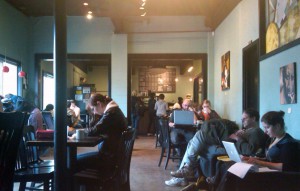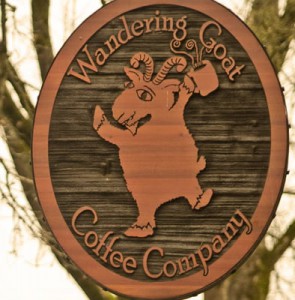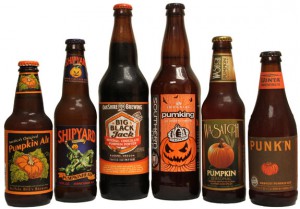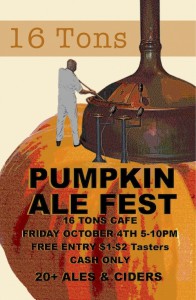Transmedia Field Guide, Part A
Transmedia Field Guide, Part A
Field Guide to Third Places in Eugene, Ore.
Ray Oldenburg (1997), in his book The Great Good Place, identifies third place as “’the core settings of informal public life.’ The third place is a generic designation for a great variety of public places that host the regular, voluntary, informal, and happily anticipated gatherings of individuals beyond the realms of home and work” (p. 16). Third place can be found in coffee houses, cafes, bookstores, libraries, bars, community art centers, parks, galleries, museums, and a multitude of others spaces. Eugene, Oregon alone hosts a number of third places, where people can gather, hang out, or spend socially unobstructed time. Some people go to third places to escape from work, school, or home environments; some go to meet or make new friends and family.
Third place, although a vague term and ambiguous space, can include several art worlds. Howard Becker’s (2008) description of art worlds in the book Art Worlds is broad enough to justify an analysis of third place as an art world. “The world of art mirrors society at large,” (p. 371) is Becker’s final line in his book. The collective aesthetic surrounding various third places can also mirror societal feelings, interpretations, and expectations. Collective action is required to make third places viable societal spaces. A coffeehouse or museum cannot exist as a third place if no one sees the value in going there.
Exploring the art world, of third places through a transmedia lens quickly becomes a question of what to include and what to leave out. Each third place is, on its own, another art world, which can be further delineated. Let us take a coffeehouse: Wandering Goat, for example. The Wandering Goat Coffeehouse is part of the art world of coffeehouses at large, which each contain their own folkloric traditions and expectations. But the Wandering Goat is also part of the art world of the Whiteaker, a specific neighborhood within Eugene that boasts its own culture and folklore. The Wandering Goat has a practice of displaying and selling art from community members on its walls. Who makes the art and produces the supplies necessary to create each piece? Those people are part of the Wandering Goat’s art world. They have a logo for their company, a reputation for vegan pastries, and only buy beans from sustainable growers. Who designed the logo? Who provided the wood that it is carved onto? Who makes their vegan pastries, who buys them? Wandering Goat purchases beans from all over the world, from Guatemala to Sumatra. These places, too, then, must be counted in the coffeehouse’s art world. The name of their coffeehouse is derived from an Arab and Ethiopian legend, and they host regular music programming in their space. So we can see that even with this one example, several art worlds are touched and tapped into. Art world, then, becomes a fluid, elastic term that I propose to use as a tool for lumping third places in Eugene.

Third place of the Wandering Goat Coffee Co.
(image credit to http://reporting1blog.wordpress.com/2011/01/24/sights-and-sounds-at-the-wandering-goat-coffee-co/)
I will focus on exploring third places in Eugene through a transmedia lens. How do third places manifest, in what ways are they talked about, expressed, and found? An advertisement for Level Up Arcade and Bar is just as much a transmedia element of third place as the beer that The Bier Stein choses to serve on any given day and the label produced for it. October brings a multiplicity of Pumpkin beers onto the tap list because there are aesthetic expectations of food and beverages during that time. Food is an underutilized element of media. It carries folkloric meaning and can be as representative of an art world as art, commercials, images, etc. The article written about an art gallery, the gallery space itself, the artist who created the art, the supplier who provided the materials necessary the transfer ideas into physical form, and a piece of artwork itself are all part of an art world. Food can follow the same formula. How could the advertisement showcasing a hamburger, the commercial made to sell it, and the menu it sits on be considered transmedia when the hamburger itself is not? I have not directly read any material that denies food a place in transmedia, but wanted to make my argument for its inclusion clear.
Third place can be identified as an art world because creating a space is a valid as creating a thing. A place can be as famous as an artwork, include the same complex nature of participants, and contribute to social discourse and aesthetic judgment. Although the theory of third place generally refers moreso to the social, intangible space surrounding a building or room or park, I propose to identify physical manifestations of third place in Eugene, Oregon. I will explore how they are expressed and exposed via transmedia and put together a field guide of where to find third places.
Resources
Becker, Howard. (2008) Art worlds. Berkeley: University of California Press.
Oldenburg, Ray. (1997). The great good place. Philadelphia: Da Capo Press.




Leave a Reply